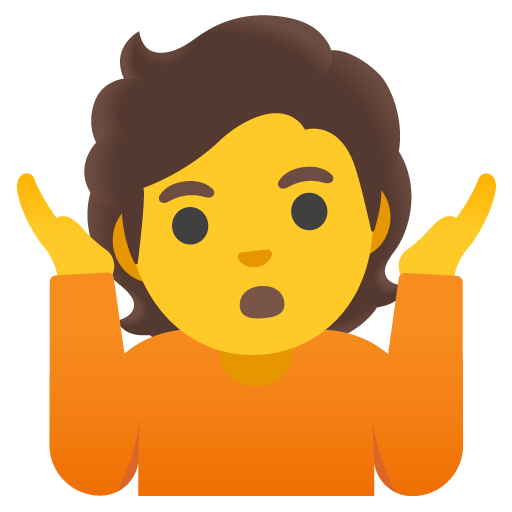Actually, it’s 5 4 10 12 2 9 8 11 6 7 3 1 for me, but too lazy to edit the image
I recently found out that javascript’s .sort() function, when called without arguments on an array of numbers, converts them all to strings and sorts them alphabetically 🤡
I’m a C programmer. My first time writing Javascript and ran into some sort of bug involving a === sign or something. Javascript is a silly language.
Javascript lets you compare unlike types without extra steps using ==. If you want strict comparison where “2” isn’t 2, use === and !==. Personally, I find that easier than having to parseint or cast every damn thing or whatever c does (strtol?). That said, I have build tools set up to enforce strict comparison because I don’t trust myself or others.
Truish and falsish and nullish are all concepts made up by madmen. JavaScript is the language of the damned.
Portuguese
cinco, dez, dois, doze, nove, oito, onze, quatro, seis, sete, três, um
5 10 2 12 9 8 11 4 6 7 3 1
cinco, dez, dois, doze, meia, nove, oito, onze, quatro, sete, três, um
5 10 2 12 6 9 8 11 4 7 3 1
(six can be “seis” or “meia”)
Which language provides the most random alphabetically sorted sequence?
Data
| N | Eng | Dut | Ger | Tur | Lex | |----+-----+-----+-----+-----+-----| | 1 | 8 | 8 | 8 | 6 | 1 | | 2 | 11 | 3 | 3 | 5 | 10 | | 3 | 5 | 1 | 1 | 1 | 11 | | 4 | 4 | 11 | 11 | 9 | 12 | | 5 | 9 | 9 | 5 | 4 | 2 | | 6 | 1 | 10 | 9 | 2 | 3 | | 7 | 7 | 12 | 6 | 10 | 4 | | 8 | 6 | 2 | 7 | 11 | 5 | | 9 | 10 | 4 | 4 | 12 | 6 | | 10 | 3 | 5 | 10 | 8 | 7 | | 11 | 12 | 6 | 2 | 3 | 8 | | 12 | 2 | 7 | 12 | 7 | 9 |Sourced from comments in thread (English from image, Dutch from Vinny93, German from TJA, Turkish from some rando, Lexicographical from monogram)
Plot with Pearson Score
Code
gnuplot -p -e ' set xlabel "Base Sequence"; set ylabel "Alphabetic"; set xtics 1,1,12; set ytics 1,1,12; set title "Alphabetic Number Plot with Correlation Score"; set key outside left; set size ratio 0.45; stats "alphabetic.tab" using 1:2 name "E"; stats "" using 1:3 name "D"; stats "" using 1:4 name "G"; stats "" using 1:5 name "T"; stats "" using 1:6 name "L"; plot "" using 1:2 with lines title sprintf("%s (%.3f)", columnhead(2), E_correlation), "" using 1:3 with lines title sprintf("%s (%.3f)", columnhead(3), D_correlation), "" using 1:4 with lines title sprintf("%s (%.3f)", columnhead(4), G_correlation), "" using 1:5 with lines title sprintf("%s (%.3f)", columnhead(5), T_correlation), "" using 1:6 with lines title sprintf("%s (%.3f)", columnhead(6), L_correlation) '
It looks like the most random language is Dutch (closest to zero), and Turkish appears to be the least random (probably the 10,11,12 sequence skewed it).
Although Lexicographic also appears to have a near zero score, despite being the most ordered. I think Pearson is a bad measure here, and maybe a Serial Correlation test might be better.
This is the second comment I’ve seen like this from you.
Please never stop.
I didn’t expect soneone to put that much effort into it.
Thanks! This is awesome!
You put a lot of work into this.
Thank you for doing and sharing this
Ah yes its nearly 8:03 o’clock
Or nearly 56 minutes to 11:08
If a mechanical clock or watch was like that it would be one hell of a fascinating movement
Cinq Deux Dix Douze Huit Neuf Onze Quatre Sept Six Trois Un
5 2 10 12 8 9 11 4 7 6 3 1
Interestingly it would be right twice a day
I’d think four times: 4:20, 4:35, 7:20, 7:35
I’m stupid and read the clock wrong and didn’t check even a little.
You’ll fit in here just fine!
Lexicographical clock
1 10 11 12 3 4 5 6 7 8 9
You’re missing 2
1 10 11 12 2 3 4 5 6 7 8 9
2 is overrated tbh
2 is overrated
tbh2bh2 is over
rate8dtbh2bh
Acht, drie, een, elf, negen, tien, twaalf, twee, vier, vijf, zes, zeven.
8, 3, 1, 11, 9, 10, 12, 2, 4, 5, 6, 7
I still don’t understand how acht=12
acht=12
Gesundheit.
Ah no I started at one. You can transpose my list by one and set zeven as 12.
I don’t even know 100% that this is Dutch, but Dutch so often reads and sounds like someone German who doesn’t know English trying to speak English and I love the language because of it ❤️
Dutch is an Anglo-Saxon language so that makes sense.
Standard Dutch is not Anglo-Saxon but some other Dutch dialects/languages like Frisian are.
Acht, drei, eins, elf, fünf, neun, sechs, sieben, vier, zehn, zwei, zwölf
8, 3, 1, 11, 5, 9, 6, 7, 4, 10, 2, 12
Ah there it is. The real language, not the one a confused toddler trying to learn German speaks
altı beş bir dokuz dört iki on onbir oniki sekiz üç yedi
6 5 1 9 4 2 10 11 12 8 3 7
Transliterating from Mandarin Chinese and using English dictionary order
Ba Er Jiu Liu Qi San Si Shi ShiEr ShiYi Wu Yi
8 2 9 6 3 4 7 10 12 11 5 1 八 二 九 六 三 四 七 十 十二 十一 五 一
It’s 9 o’clock somewhere!
Okay, here’s the challenge: Make it always tell the correct time 8:30 should point to the 8 with the little hand and the 6 with the big hand. And 8:35 shoudl point to the 7 with the big hand.
Was thinking the same thing. This has to be possible, within reason of course
I could get it done with a couple stepper motors, an Arduino, probably a couple hall effect sensors.
I both love and hate this
What time is it?
It’s Beer O’clock!I hate this so much
8 3 1 11 5 9 6 7 4 10 2 12
I don’t get it
The numbers are sorted by their English spellings.
What?
Two, Eight, Eleven, — not gonna type it all out because it’s already wrong.
What am I missing here?
I was equally confused initially, but then I looked at the clock in my house and realized that the number up top is the highest number, 12, and not 0. So the first number in the ordering is at the position of the 1 of a normal clock.
“Two” is the last one. The order starts with “eight”.
Think about it: on a real analogue clock, where is the smallest number and where is the largest?
Thank you, I was so confused and stuck lol. I always just treated the top as the starting spot because the days starts at 12:00 AM. That’s what I get for trying to think through this well past my bedtime 🤣
If it makes you feel better I did the same lol
You’re missing the lack of logic, aka you’re not missing shit, OP has some soul searching to do.
What lack of logic? The numbers on the clock are sorted based on the alphabetical order when they’re spelled out in English. Just like with a real clock, the top number is the highest, not the lowest. That seems quite logical to me
Is it a meme or a riddle?
Just a silly joke, I guess.




















